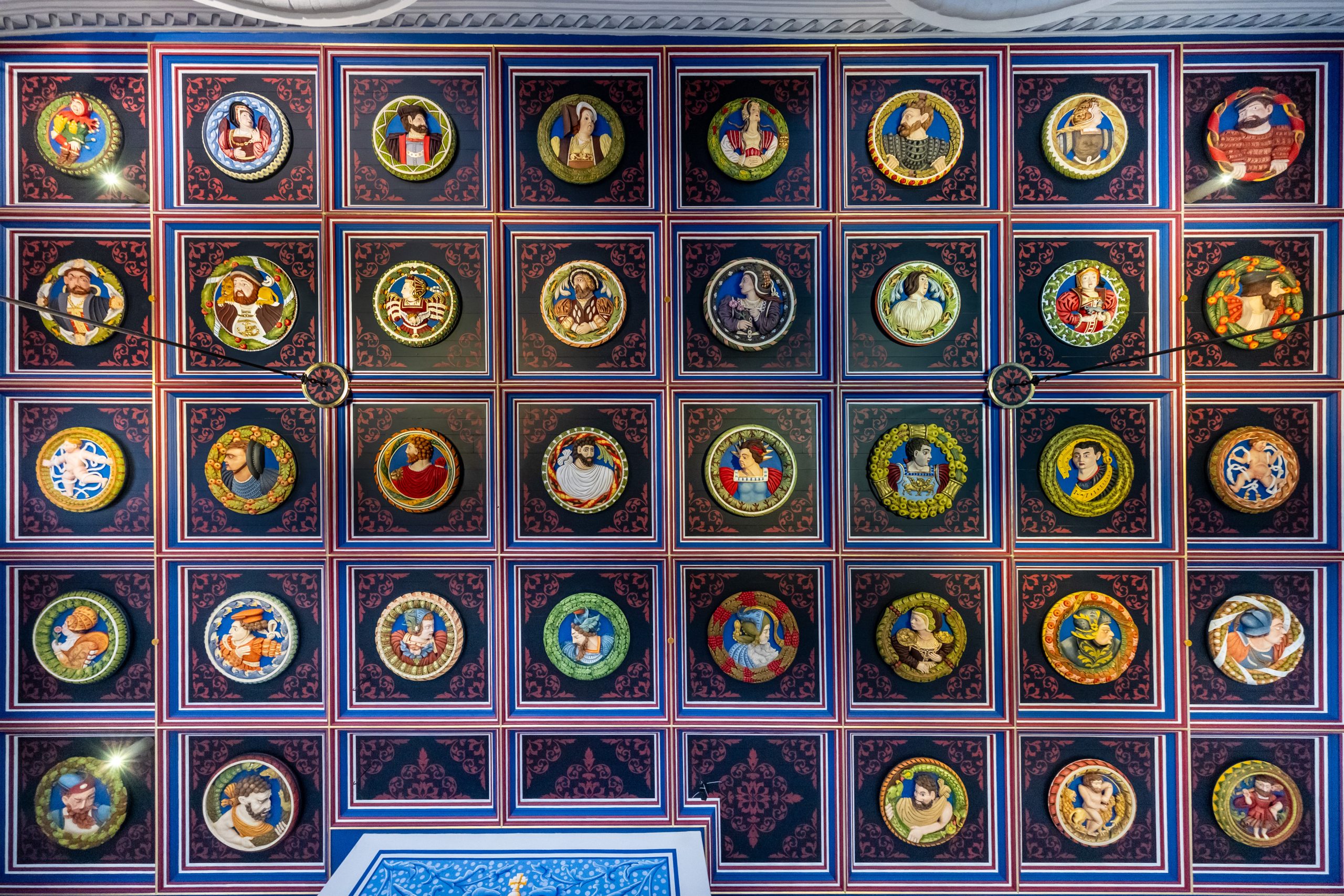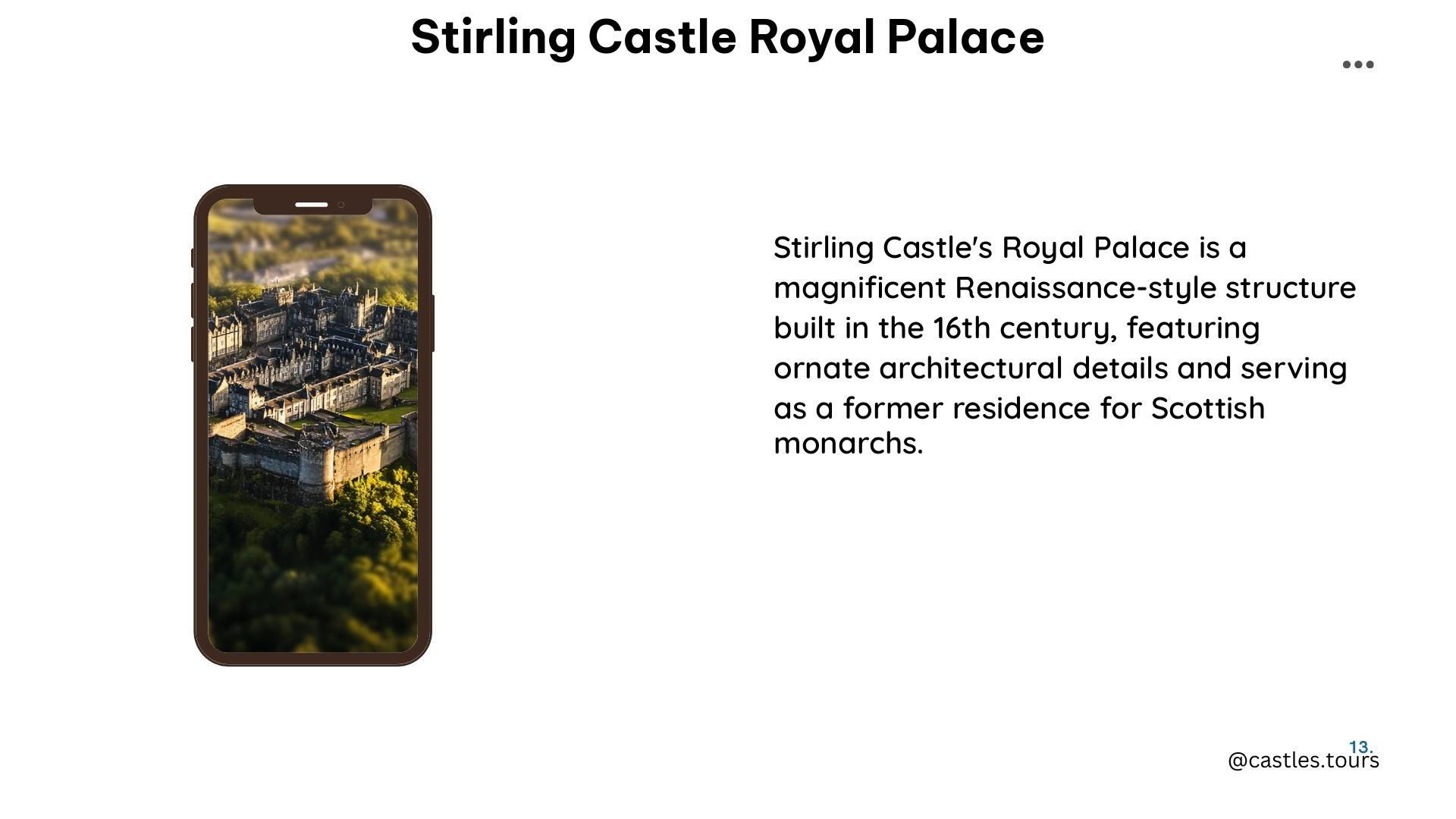Stirling Castle’s Royal Palace is a captivating historical site that offers visitors a unique opportunity to step back in time and explore the grandeur of Scotland’s royal heritage. As one of the country’s most iconic landmarks, the palace holds immense significance, serving as the childhood home of Mary Queen of Scots and a favored residence of the Stewart kings and queens.
The Renaissance Influence on Stirling Castle’s Royal Palace

The design of the Royal Palace at Stirling Castle was heavily influenced by the Renaissance, reflecting the ambitions of James V to present himself as a sophisticated and learned ruler. The palace’s decorative scheme, both inside and out, employed elaborate symbols and motifs to convey messages of power, prosperity, wisdom, and justice – all hallmarks of the Renaissance style. The use of bright colors, expensive fabrics, and ornate patterns was characteristic of this era, showcasing the wealth and prestige of the Scottish monarchy.
The Architectural Layout of the Royal Palace

The Royal Palace at Stirling Castle comprises the Royal Lodgings for the king and queen, each with three spacious rooms: an Outer Hall, an Inner Hall, and a Bedchamber. These rooms were arranged around a courtyard known as the Lion’s Den and were used for a variety of purposes, including meals, receptions, and state affairs. Interestingly, the bedchambers were rarely used for sleeping, as the king and queen preferred to rest in small private chambers called closets.
The Restoration and Preservation of the Royal Palace
In recent years, a major restoration project lasting 10 years and costing £12 million was completed in 2011, with the aim of returning the Royal Palace to its former glory. This ambitious undertaking has allowed visitors to glimpse the opulence and grandeur of one of Scotland’s great royal residences, with the lavish design and furnishings recreated to reflect the splendor of the 1500s.
Visiting the Stirling Castle Royal Palace
Stirling Castle, including the Royal Palace, is open to visitors all year round, seven days a week. From April 1 to September 30, the castle is open from 9:30 am to 6:00 pm, and from October 1 to March 31, it is open from 9:30 am to 5:00 pm. The last ticket is sold 45 minutes before closing. The castle offers a range of amenities, including car and coach parking, toilets, a restaurant, a gift shop, and a book shop. It also has reasonable wheelchair access and toilets for disabled visitors.
Additional Attractions at Stirling Castle
In addition to the Royal Palace, Stirling Castle features several other must-see attractions, including:
- The Great Hall
- The Chapel Royal
- The Great Kitchens
- Queen Anne Gardens
- The Stirling Tapestries
- The Palace Vault
- The Castle Exhibition
- The Stirling Heads Gallery
- The Access Gallery
- The Regimental Museum
These diverse offerings ensure that visitors to Stirling Castle can immerse themselves in the rich history and cultural heritage of Scotland, making it a truly remarkable destination for castle enthusiasts and history buffs alike.
References
- Historic Environment Scotland. (n.d.). Stirling Castle: History | Historic Environment Scotland. Retrieved from https://www.historicenvironment.scot/visit-a-place/places/stirling-castle/history/
- Canmore. (n.d.). Stirling Castle, Palace | Canmore. Retrieved from https://canmore.org.uk/site/142457/stirling-castle-palace
- Historic Environment Scotland. (n.d.). Stirling Castle | Historic Environment Scotland. Retrieved from https://www.historicenvironment.scot/visit-a-place/places/stirling-castle/
- In Stirling. (n.d.). The Royal Palace at Stirling Castle. Retrieved from http://www.instirling.com/stirling_castle_palace.html
- Wikipedia. (n.d.). Stirling Castle – Wikipedia. Retrieved from https://en.wikipedia.org/wiki/Stirling_Castle
